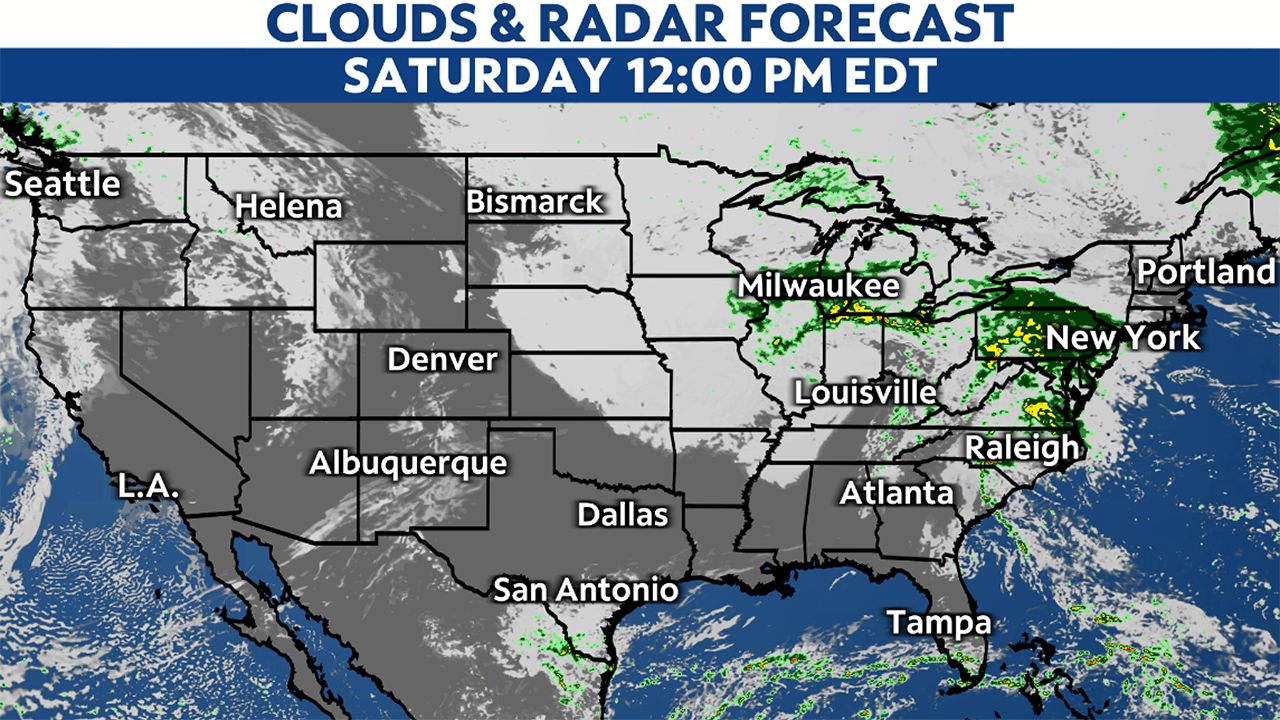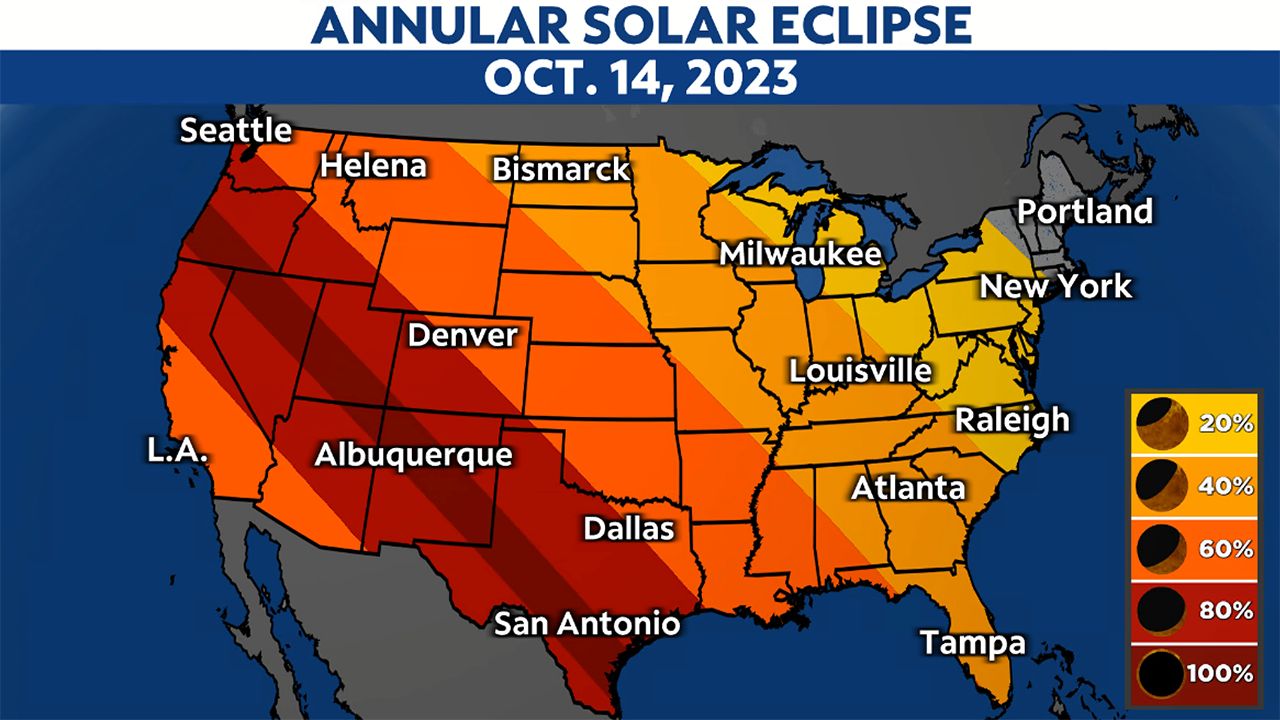On Oct. 14, we’ll get to view a spectacular show across the U.S., the annular solar eclipse, and if you’re on the west coast, you’re in luck.
NASA states the annular solar eclipse occurs when the Moon passes between the Sun and Earth, but when the Moon is at or near its farthest point.
Since the Moon is far away, it won’t cover the Sun completely. A thin outer ring of the Sun will be visible behind the moon creating what’s known as a ‘ring of fire.’
This year, the solar eclipse will start in Oregon at 9:13 a.m. PT and end at 12:03 p.m. CT in Texas.
But don’t fret, even if you don’t live in the western U.S., you’ll still be able to see a partial solar eclipse.
However, the weather will be a hit-or-miss. Viewing the eclipse might become a bit more difficult for some spots.

Around the time the eclipse starts in Oregon, the Northwest will deal with some cloud cover. Areas across the Midwest and Northeast won’t see much of the partial eclipse with rain and clouds hanging around.
But, across most of the Southwest, South and Southeast, you should be able to see the amazing show.
Eclipse safety
Viewing the eclipse through a camera lens, telescope, binoculars or sunglasses can instantly damage your eyes.
Use proper eye protection, such as eclipse glasses, when viewing the eclipse.
Unlike a solar eclipse, it is not okay to take off the glasses when totality occurs since the Moon never completely blocks the Sun. Use proper eye protection through the entire show.
If you miss the eclipse, don’t worry, we’ll have another one in April 2024. This time, it’ll be for the eastern U.S.
Our team of meteorologists dives deep into the science of weather and breaks down timely weather data and information. To view more weather and climate stories, check out our weather blogs section.

